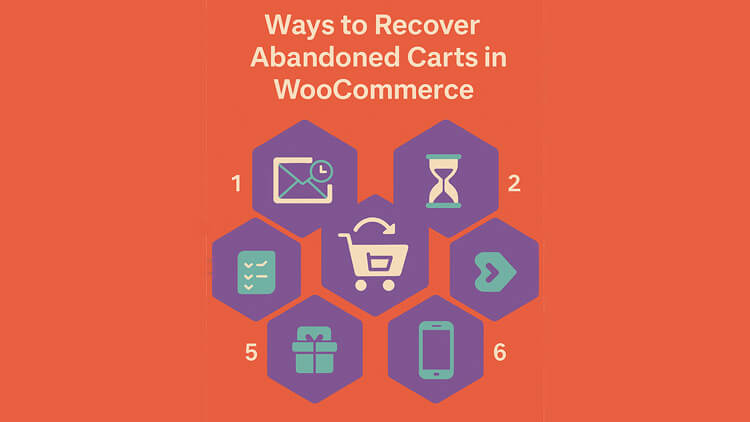As we move into 2025, WooCommerce trends are shaping the future of online stores, offering more advanced features and tools to help businesses thrive.
With WooCommerce’s market share growing, store owners must stay updated on the latest eCommerce statistics to remain competitive.
In this article, we will explore key WooCommerce statistics for 2025, revenue insights, and emerging trends that will shape the eCommerce industry.

Key Takeaways:
- Learn how WooCommerce maintains its position as the leading eCommerce platform.
- Explore WooCommerce’s revenue and global reach.
- Discover AI-driven advancements in WooCommerce.
- Learn how WooCommerce is optimizing mobile commerce.
- See how WooCommerce is reducing reliance on extensions.
- Gain insights into conversion rate optimization tools.
Overview of WooCommerce’s Growth in 2025
In today’s fiercely competitive eCommerce landscape, WooCommerce continues to cement its position as the industry leader.
The platform’s remarkable WooCommerce statistics for 2025 reveal not just sustained growth but increasing dominance in the global eCommerce ecosystem.
Recent data shows that over 6 million active stores currently power their online operations through WooCommerce, with an impressive 6% annual growth rate throughout 2024.
This expansion accelerated in the latter part of the year, shown by a 1.9% increase in WooCommerce store numbers since Q3 2024 alone.
Market analysts project this growth rate to continue through 2025, potentially reaching 8 million active stores by year-end.
Historically, more than 9 million websites have leveraged WooCommerce’s capabilities. The platform’s enhanced performance and feature set have significantly improved retention rates.
In 2023, 85% of stores remained active after one year. That number has now increased to 92%.
Impact of WooCommerce on the eCommerce Industry
WooCommerce’s market share has reached an impressive 38.76%, outperforming major competitors like Shopify(23.43%) and Wix(11.87%). Industry analysts project this will increase to approximately 41% by the end of 2025, driven by several key metrics:
- A remarkable 3.5% of all websites globally run on WooCommerce
- 30% of online stores worldwide rely on WooCommerce’s ecosystem
- Most tellingly, 93.7% of WordPress-based eCommerce sites choose WooCommerce
- WooCommerce powers approximately 7% of global online sales
- The platform accounts for 28% of sales generated by retail eCommerce websites
The platform’s plugin has been downloaded over 230 million downloads as of early 2025. It sees an average of 35,000 daily downloads, a 16.7% increase from 2024 figures. This makes it a top choice for businesses entering the online marketplace.
What to Expect in 2025
Based on comprehensive market analysis and development roadmaps, WooCommerce is on track to strengthen its market position in 2025 significantly.
The full implementation of High-Performance Order Storage (HPOS) is now utilized by 78% of stores.
It has delivered average page load improvements of 42% and checkout speed increases of 35% for high-volume merchants.
Key growth indicators for 2025 include:
- Market share projected to increase from 38.76% to approximately 41% by Q4 2025
- Enterprise-level adoption (stores with >$1M annual revenue) is expected to grow by 23%
- Average order value is predicted to increase by 15% for stores utilizing AI-powered recommendation engines
- Mobile conversion rates are projected to improve by 30% through PWA implementation and checkout optimizations
- The developer ecosystem is expected to expand by 18% with the introduction of new API capabilities.
These projections are supported by WooCommerce’s strategic investments in AI-driven improvements, headless commerce capabilities, and optimized mobile experiences.
The platform’s architectural flexibility, performance scalability, and commitment to merchant-centric innovation remain the primary factors driving this anticipated growth in both store numbers and revenue generation.
WooCommerce Revenue Growth: Powering the Global Economy
WooCommerce revenue growth statistics demonstrate its economic impact:
- WooCommerce powers approximately 7% of global online sales
- It accounts for 28% of sales generated by retail eCommerce websites
- 54 WooCommerce-powered websites have achieved sales values of $1 million+
- Over 11,000 sites have reached $100,000 in sales revenue
- WooCommerce’s plugin sales generated $30 million in 2019
- The platform surpassed $20 billion in revenue in 2020
- Gross merchandise volume reached $11.8 billion in 2019
These figures underscore WooCommerce’s role not just as a platform but as a significant economic driver in the digital commerce space.
WooCommerce Global Expansion: Breaking Language and Geographic Barriers
WooCommerce global expansion continues at an impressive pace, with support for 118 languages, including Albanian, Arabic, Catalan, Chinese, French, Italian, and Spanish.
This comprehensive language support enables businesses to scale internationally with minimal friction.
As of March 2025, WooCommerce powers approximately 4.6 million live stores worldwide. The top five markets by number of operational websites are:
- United States: 421,419 websites
- United Kingdom: 170,832 websites
- India: 131,682 websites
- Iran: 112,089 websites
- Canada: 73,813 websites
WooCommerce Trends 2025: Innovations Reshaping Online Commerce
As we progress through 2025, WooCommerce trends show a platform not resting on its laurels but actively evolving to meet emerging market demands. Key developments include:
Performance at Scale: The HPOS Revolution
The introduction of High-Performance Order Storage (HPOS) represents a quantum leap in WooCommerce’s capacity to handle large-scale operations.
This infrastructure enhancement delivers accelerated order processing speeds. It is critical for businesses experiencing rapid growth or managing high transaction volumes.
Core Feature Integration: Reducing Extension Dependence
WooCommerce is streamlining its ecosystem by incorporating essential WooCommerce features directly into its core platform.
Functions like brand management, cost of goods sold (COGS) tracking, and shipment monitoring are being built directly into WooCommerce. This reduces the need for multiple extensions and creates a more cohesive experience.
AI-Powered Commerce: The Next Frontier
Among the most transformative WooCommerce emerging technologies is its integration of artificial intelligence. AI-driven capabilities now enable:
- Hyper-personalized shopping experiences based on real-time behavioral data
- Smart inventory management that anticipates demand fluctuations
- Predictive analytics that inform strategic marketing decisions
- Customer service automation that scales support operations efficiently
Headless Commerce: Unlimited Flexibility
The platform’s embrace of headless architecture provides unprecedented flexibility for creating custom, responsive, and dynamic storefronts.
This approach allows seamless integration with various technologies and platforms. It gives developers freedom while maintaining WooCommerce’s robust backend functionality.
WooCommerce Mobile Commerce: Meeting Customers Where They Are
As smartphones become the primary shopping tool for consumers worldwide, WooCommerce mobile commerce enhancements include:
- Friction-reducing mobile checkout processes
- Enhanced support for Progressive Web Apps (PWAs)
- Touch-optimized navigation and product browsing
- Mobile-specific promotional tools and engagement features
Enhanced Security: Protecting the Ecosystem
In response to growing cybersecurity threats, WooCommerce has implemented advanced security protocols. These include real-time fraud detection, mandatory two-factor authentication, and automatic security updates. These measures help protect both merchants and their customers.
Understanding WooCommerce Customer Behavior: The Data Advantage
The platform’s enhanced analytics suite provides unprecedented insight into WooCommerce customer behavior, offering:
- Real-time performance dashboards
- Detailed customer journey mapping
- Behavioral segmentation tools
- Purchase pattern analysis
- Abandonment tracking and recovery
These tools help merchants understand not just what customers are buying, but why? Enabling more strategic inventory management and marketing decisions.
Conversion Rate Optimization: WooCommerce’s Strategic Advantage
Conversion rate optimization for WooCommerce has become significantly more sophisticated, with the platform now offering:
- A/B testing built directly into the core experience
- Heat mapping to identify user engagement patterns
- Friction point analysis in the purchase journey
- Smart product recommendation algorithms
- Abandoned cart recovery automation
- Dynamic pricing capabilities
These tools empower merchants to continuously refine their stores, incrementally improving conversion metrics and maximizing revenue.
Visual Identity Refresh: Modern Commerce Deserves Modern Design
WooCommerce has undergone a visual evolution, introducing a reimagined logo and brand identity that features a vibrant purple and white color palette.
This refresh reflects the platform’s forward-thinking approach and commitment to staying relevant in a rapidly evolving digital landscape.
Frequently Asked Questions
What are the key WooCommerce trends for 2025?
WooCommerce trends include High-Performance Order Storage (HPOS) for faster order processing, AI-powered commerce, enhanced mobile commerce features, headless commerce for flexibility, and real-time fraud detection with two-factor authentication for improved security.
How does WooCommerce compare to Shopify?
WooCommerce offers more customization and flexibility, especially for WordPress users, and has no monthly fees. However, hosting, themes, and plugins may add costs. It holds a larger market share in WordPress eCommerce, whereas Shopify provides an all-in-one hosted solution with built-in support
What security measures does WooCommerce offer in 2025?
WooCommerce enhances security with real-time fraud detection, two-factor authentication (2FA), and automatic security updates. While 2FA is supported, it may require plugins. These features protect both store owners and customers, reducing fraud risks and strengthening online store security.
Is WooCommerce suitable for mobile commerce?
Yes, WooCommerce is optimized for mobile with fast, frictionless checkout, Progressive Web App (PWA) support, touch-friendly navigation, and mobile-specific marketing tools. These features enhance user experience and conversions, making WooCommerce a strong choice for mobile-first eCommerce businesses.
How does WooCommerce help with conversion rate optimization?
WooCommerce supports A/B testing (via plugins), AI-powered smart recommendations, heatmaps for user tracking, abandoned cart recovery automation, and dynamic pricing. These tools help businesses optimize conversions, personalize customer experiences, and increase sales effectively.
Can WooCommerce support large-scale businesses?
Yes, WooCommerce is highly scalable, supporting HPOS for performance, AI-driven inventory management, and seamless third-party integrations. Many high-revenue businesses use it for enterprise-level eCommerce, leveraging customization and advanced features to handle large-scale operations efficiently.
Conclusion
As we progress through 2025, WooCommerce continues to lead the eCommerce industry with innovation and adaptability. With AI-powered analytics, mobile-first enhancements, and High-Performance Order Storage (HPOS), the platform delivers a seamless shopping experience for both merchants and consumers.
WooCommerce’s scalability, extensive plugin ecosystem, and customization options make it a top choice for businesses of all sizes. The platform empowers entrepreneurs to expand globally, optimize conversions, and enhance customer engagement with cutting-edge tools and integrations.
As eCommerce evolves, WooCommerce remains at the forefront of digital retail, setting industry standards and shaping future trends. For those looking to launch or scale their online store, WooCommerce offers a powerful, flexible, and future-proof solution.

